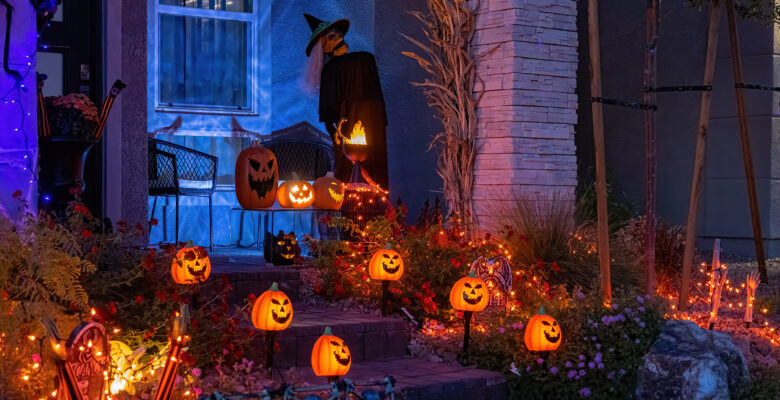Do you know who loves Halloween as much as kids do? Teenagers. Even without trick-or-treating, Halloween has turned into one of the most popular social scenes for teens. But here’s where the scary part comes in: it’s also one of the riskiest nights of the year for teens when it comes to alcohol and drugs. Parties, costumes, and peer pressure all brew together and can turn into risky behavior. The statistics are downright horrifying. Here are the fast facts, and how parents and caregivers can help change outcomes.
1. Underage drinking tends to surge during the Halloween season.
The Halloween season comes with more than just candy and costumes. It’s also one of the busiest times of year for teen parties. With community festivals and the social pressure to be out and doing something, many teens end up gathering in groups and staying out later than usual. Schools and law enforcement report a noticeable uptick in unsupervised hangouts and house parties during Halloween weekend, and alcohol is often in the mix.
Source: National Institute on Alcohol Abuse and Alcoholism (NIAAA), reports from school districts and local prevention coalitions.
• • • • • • •
2. Teens are more likely to drink when unsupervised at house parties.
Research shows that even when parents are home, if they’re not actively involved, parties can quickly spiral into risky territory. Teens are more likely to consume alcohol if they believe supervision is passive or limited. Allowing teens to drink at home might feel like a way to keep them safe, but studies show it can have the opposite effect. Here are the facts about underage drinking and how it affects teens.
Source: Komro, K. et al. (2007). “Social and policy-level influences on underage drinking” – American Journal of Preventive Medicine
• • • • • • •
3. Alcohol-related crashes increase on Halloween night.
Nearly half of all fatal crashes on Halloween night involve a drunk driver, according to the National Highway Traffic Safety Administration (NHTSA). This risk includes young drivers and pedestrians.
Source: NHTSA Halloween Safety Tips
• • • • • • •
4. Costumes can mask behavior.
Literally. Halloween costumes give teens a sense of freedom and anonymity that may embolden risky choices. The “I’m not myself” mentality can lower inhibitions and increase use of alcohol and drugs.
Source: Zimbardo, P. (1969). The Human Choice: Individuation, Reason, and Order vs. Deindividuation, Impulse, and Chaos.
• • • • • • •
5. Fake IDs and store thefts increase in October.
Retailers and law enforcement agencies note spikes in attempted alcohol theft and fake ID usage in the weeks leading up to Halloween. Some stores even post warnings to employees to be extra vigilant.
Source: Community anecdotal evidence reported by ABC News and individual law enforcement agencies.
• • • • • • •
6. Social media makes the peer pressure stronger.
Teens who see peers drinking or posting party photos are more likely to feel pressure to participate, even if they wouldn’t have otherwise. Social media amplifies the idea that “everyone’s doing it,” even when they’re not. Statistics prove that most teens do not drink.
Source: Nesi, J. et al. (2018). “Social Media Use and Adolescent Alcohol Use” – Clinical Psychological Science
• • • • • • •
7. Alcohol is still the most used and abused drug by teens.
According to the CDC, about 29% of high school students reported drinking alcohol in the past 30 days, and around 9% reported binge drinking. Alcohol remains more commonly used than marijuana, tobacco, or other substances among youth.
Source: CDC – Underage Drinking
• • • • • • •
8. Parents underestimate how often their teens are offered alcohol.
Many parents believe “my teen doesn’t go to those parties.” But surveys consistently show that teens are often offered alcohol. While the exact percentage varies by region and study, ease of access is a key contributor to underage drinking. Teens are getting alcohol from their own home, from friends’ homes, and from older friends, and they find it easy to do so.
Source: SAMHSA’s National Survey on Drug Use and Health (NSDUH) reports that around 78% of underage drinkers say they got alcohol from a friend, family member, or their own home.
• • • • • • •
Conversations count. Especially before costumes.
So what should parents and caregivers do? Start the conversation before the party texts start circulating. Share these facts. Ask open-ended questions and listen. Continue the conversation, whether in the car, at dinner, on a walk, or anywhere. You can access conversation starters here. And remember, your influence matters more than you may think. Most teens do care what their parents and caregivers think, even if they don’t always show it. Let’s make it a happy Halloween for all!

